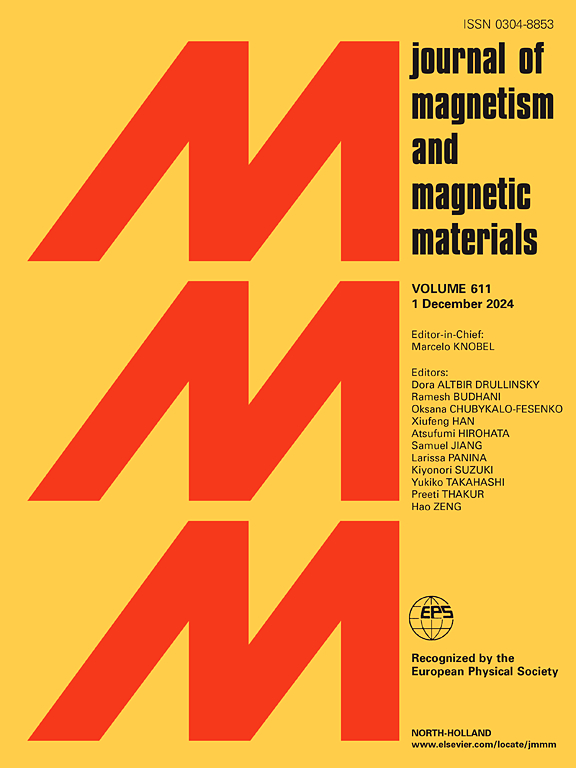Tailoring the electronic and magnetic properties of AA-stacked ZnO bilayer by engineering covalently bonded F/N-intercalation or introducing SiC substrate
IF 2.5
3区 材料科学
Q3 MATERIALS SCIENCE, MULTIDISCIPLINARY
引用次数: 0
Abstract
To meet the current requirements for diluted magnetic semiconductors, it is essential to design the materials with high stability and spin polarization for promoting the development of spintronic devices. Amelioration on the properties of two-dimensional ZnO bilayers for high-performance optoelectronic and spintronic remains a significant challenge and is highly anticipated. Herein, we systematically investigated the electronic structures and magnetic properties of AA-stacked ZnO bilayers through the first-principles calculations, focusing on the effects of covalently bonded F/N-intercalation and the introduction of SiC substrate. The results indicate that pristine ZnO BL, F@ZnO, N@ZnO bilayer and ZnO/SiC heterostructure exhibit dynamical, and mechanical and thermal stability. F@ZnO and N@ZnO exhibit magnetic properties, and the magnetic moments are 0.659 μB and 1.0 μB, which are primarily derived from O-2p and N-2p orbitals, respectively. F@ZnO exhibits half-metallic magnetic characteristics, whereas N@ZnO displays metallic features at high intercalation concentrations up to 100%. The stable half-metallicity originates from a spontaneous phase transition driven by Stoner instability due to the high density of states peak near the Fermi level. In ZnO/SiC heterostructure, one of the ZnO layers adjacent to the SiC layer becomes buckled with a height of 0.891 Å, while the other ZnO layer, situated farther from the SiC layer, remains planar. Furthermore, the system undergoes the transition from a nonmagnetic state to a ferromagnetic state due to the introduction of C atoms. These findings provide a new platform for designing 2D magnetic thin films, which could hold potential for enhancing the application of ZnO materials in optoelectronic and spintronic devices.
通过共价键F/N共掺或引入碳化硅衬底来定制AA叠层氧化锌双电层的电子和磁性能
为了满足目前对稀磁半导体的要求,设计具有高稳定性和自旋极化的材料是推动自旋电子器件发展的关键。改善用于高性能光电和自旋电子学的二维ZnO双层膜的性能仍然是一个重大的挑战,并且备受期待。本文通过第一性原理计算系统地研究了aa堆叠ZnO双分子层的电子结构和磁性能,重点研究了共价键F/ n嵌入和SiC衬底的引入对ZnO双分子层的影响。结果表明,原始ZnO BL、F@ZnO、N@ZnO双分子层和ZnO/SiC异质结构均表现出动力学、力学和热稳定性。F@ZnO和N@ZnO具有磁性,磁矩分别为0.659 μB和1.0 μB,主要来源于O-2p轨道和N-2p轨道。F@ZnO表现出半金属磁性特征,而N@ZnO在高插层浓度高达100%时表现出金属磁性特征。稳定的半金属丰度来自于由斯通纳不稳定性驱动的自发相变,这是由于态的高密度在费米能级附近达到峰值。在ZnO/SiC异质结构中,靠近SiC层的ZnO层屈曲高度为0.891 Å,而位于SiC层较远的ZnO层保持平面。此外,由于C原子的引入,系统经历了从非磁性到铁磁性的转变。这些发现为设计二维磁性薄膜提供了一个新的平台,这可能会增强ZnO材料在光电和自旋电子器件中的应用。
本文章由计算机程序翻译,如有差异,请以英文原文为准。
求助全文
约1分钟内获得全文
求助全文
来源期刊

Journal of Magnetism and Magnetic Materials
物理-材料科学:综合
CiteScore
5.30
自引率
11.10%
发文量
1149
审稿时长
59 days
期刊介绍:
The Journal of Magnetism and Magnetic Materials provides an important forum for the disclosure and discussion of original contributions covering the whole spectrum of topics, from basic magnetism to the technology and applications of magnetic materials. The journal encourages greater interaction between the basic and applied sub-disciplines of magnetism with comprehensive review articles, in addition to full-length contributions. In addition, other categories of contributions are welcome, including Critical Focused issues, Current Perspectives and Outreach to the General Public.
Main Categories:
Full-length articles:
Technically original research documents that report results of value to the communities that comprise the journal audience. The link between chemical, structural and microstructural properties on the one hand and magnetic properties on the other hand are encouraged.
In addition to general topics covering all areas of magnetism and magnetic materials, the full-length articles also include three sub-sections, focusing on Nanomagnetism, Spintronics and Applications.
The sub-section on Nanomagnetism contains articles on magnetic nanoparticles, nanowires, thin films, 2D materials and other nanoscale magnetic materials and their applications.
The sub-section on Spintronics contains articles on magnetoresistance, magnetoimpedance, magneto-optical phenomena, Micro-Electro-Mechanical Systems (MEMS), and other topics related to spin current control and magneto-transport phenomena. The sub-section on Applications display papers that focus on applications of magnetic materials. The applications need to show a connection to magnetism.
Review articles:
Review articles organize, clarify, and summarize existing major works in the areas covered by the Journal and provide comprehensive citations to the full spectrum of relevant literature.
 求助内容:
求助内容: 应助结果提醒方式:
应助结果提醒方式:


